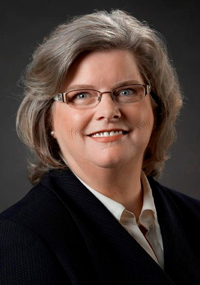Vizient and new technology
Journal of Healthcare Contracting: Can you name two or three ways in which the process of evaluating new medical technology differs today from, say, 10 or 15 years ago? What accounts for those differences?
Debbie Archer, procurement director, innovative technology, Vizient: Hospitals are more openly touting their use of technologies as a competitive advantage. This has fueled a quest for increased understanding of which technologies are likely to improve patient outcomes and are worth the conversion investment. For the Vizient Innovative Technology program, this has led to an increase in demand for technology reviews and an increase in the complexity of the products being considered. It has also caused us to expand the scope of the products being assessed and the expertise needed to complete the reviews.
As an example, our program now considers emerging solutions in the information technology and services areas. To accommodate this expansion, we have added member councils for information technology, operational services and pediatrics. Additionally, five years ago we began hosting the annual Innovative Technology Exchange (formerly called Expo) to give more provider visibility to the latest technologies and allow for broader feedback to the review process.
JHC: When your sourcing team hears a vendor (or end user, such as a physician or surgeon) call a new device or technology “innovative,” what should their expectations be of that device or technology?
Debbie Archer: For Vizient and our councils, an innovative medical technology should incrementally impact either clinical care or the hospital care model in a unique and positive way. If it can assure consistently better outcomes at the same time it is offering cost savings and a reduced sustainability footprint, it is even more likely to succeed.
JHC: Can a GPO do anything more than introduce its members to new technologies from early-stage or startup medical device firms? In other words, can a national GPO sign agreements with companies such as these, which tend to be small?
Debbie Archer: At Vizient, the size of the vendor is not a consideration in the contracting process. In fact, the Innovative Technology program was designed originally with small medical device inventors in mind. In addition to providing visibility to items determined to be innovative, Vizient also offers those vendors an Innovative Technology contract to assist with moving their technology to market. This contract will assure hospitals protective legal terms and best national pricing for the latest technologies
JHC: What are the challenges in evaluating clinical evidence about a newly introduced product/device, which probably lacks a track record in the field? How should the provider (GPO, IDN, hospital, etc) deal with those difficulties?
Debbie Archer: We review the data provided by the supplier and will often counsel them if they need to pause and accumulate more trial data prior to seeking a Vizient contract. The timing is important because they want to bring their product for review while it is able to demonstrate unique properties. But coming too soon, when they have not also validated their improved outcomes, can cause them to fail in gaining a contract. At the IDN or hospital level, the product would almost certainly be evaluated or trialed by their value analysis committee.
JHC: To what extent can the healthcare provider hold the vendor accountable for the performance of a newly introduced device after it is in use in the healthcare facility?
Debbie Archer: Typically, providers rely on third party clinical trials, FDA approval processes, and their own evaluations prior to making a purchase decision on a relatively new product. If the product does not live up to their expectations, the facility will cease to purchase the product and move to a more effective solution.
JHC: In September, Vizient sponsored its first-ever Clinical Connections Summit, which included your “Innovation Challenge” event. The Summit also featured an “Innovative Technology Exchange,” where members could view technologies and provide feedback to developers. How does this approach differ – if at all – from Vizient’s traditional attempts to expose members to new medical technologies?
Debbie Archer: Vizient’s legacy companies were extremely successful at exposing members to new technology. Novation and MedAssets each held annual innovative technology events, and University HealthSystem Consortium held a “start-up” challenge as part of their annual member conference to highlight new technology companies. What we have done with our first Fall Clinical Connections Summit as a combined organization is to include the Innovation Technology Exchange [where 170 emerging technology solutions were to be showcased] and the new Innovation Challenge with the annual clinical education event for members. We believe this format will create a number of learning opportunities specifically designed with clinicians in mind. For the Exchange in particular, the format offers a learning playground that supplements classroom style continuing education as well as member-to-member, member-to-supplier and member-to-staff connections.
JHC: Any final thoughts on the challenges and/or opportunities associated with evaluating new medical technologies?
Debbie Archer: There is a need for trailblazers in healthcare – on both the supplier and provider sides of the business. However, innovators will serve the medical community more fully if they collaborate closely and focus on bringing products to market that address identified problems. So often we see the reverse: Someone has an idea, develops a product, then tries to establish a need in the hospital for the product.

